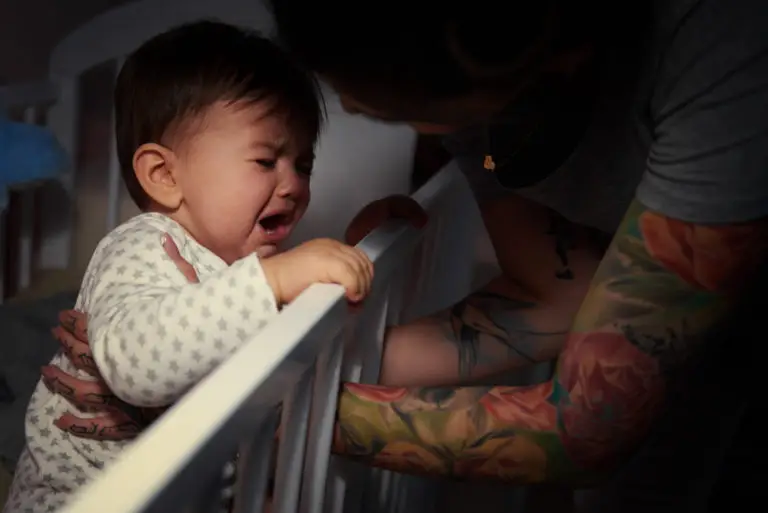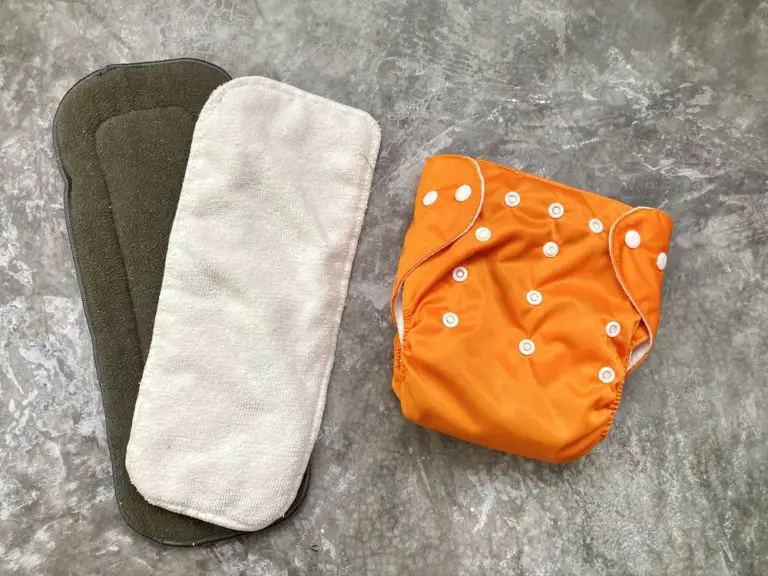How to Change a Cloth Diaper? (Step-by-Step Guide)
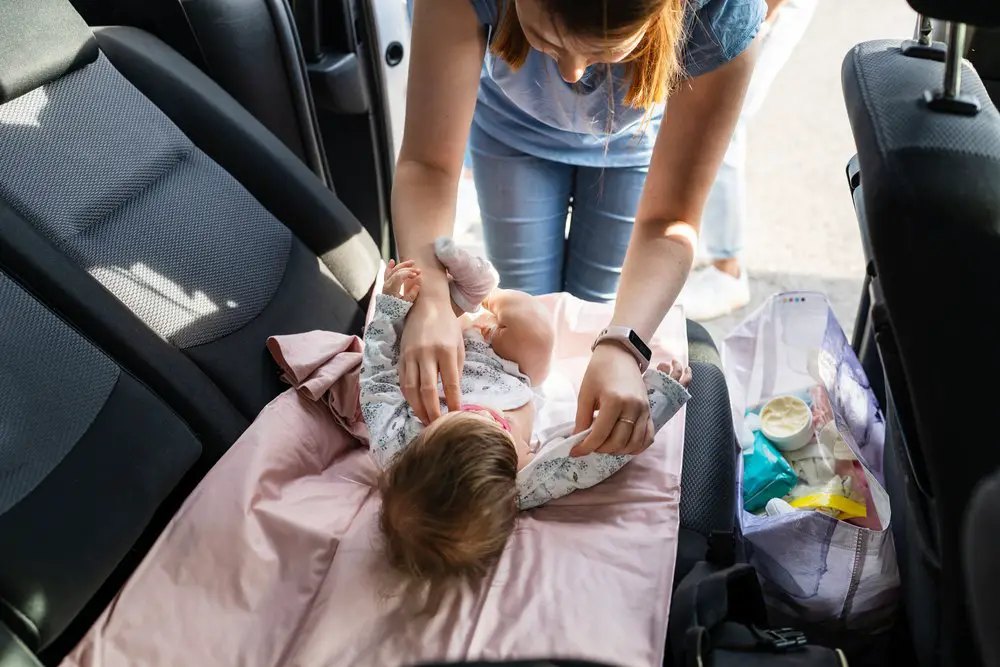
Knowing how to change a cloth diaper is an important part of the cloth diapering process. Different types of cloth diapers require different steps, and you don’t want to miss one of the essential steps in the process, or you could end up with ruined or stained diapers. Continue reading for all the tips and tricks needed to change cloth diapers properly.
- How to Change a Cloth Diaper?
- How Often Should I Change Cloth Diapers?
- Cloth Diapering Changing Tips
- Changing Cloth Diapers While Traveling
How to Change a Cloth Diaper?
Essentially, to change a dirty cloth diaper, the process is similar to changing a disposable diaper.
You remove the diaper, clean your baby’s bottom, apply ointment if needed and place a clean diaper on your baby’s bottom.
A cloth diaper change includes a few extra steps depending on the type of diaper you use. One step all cloth diapers will require is washing out any poopy messes.
Supplies You Need For A Cloth Diaper Change
When changing a cloth diaper, you first need to gather all your supplies. You will need a clean cloth diaper, wipes, and possibly diaper ointment. You should only use diaper ointment that is safe for use with cloth diapers.
You will also need a diaper sprayer or spatula and a diaper pail, but you will use these supplies after removing your baby from the changing table.
Depending on the style of cloth diaper you are using, you may also need diaper pins or fasteners and a diaper cover.
Look for a diaper pail where you can place a washable diaper bag in.
These bags will help contain the odor and make tossing your diaper in the washer easier since you won’t have to touch all the messy diapers. You can also put the bag in the wash at the same time.
Preparation
Before you change a dirty diaper, you should first wash your hands. It may seem odd to wash your hands before a diaper change, but you don’t want to spread any germs to your baby when you change them.
After washing and drying your hands, set up your diaper changing area with all the needed supplies.
If you know or suspect your baby’s diaper is poopy, make sure to have plenty of wipes on hand; you don’t want to be stuck with a mess you can’t clean up!
You will also need a clean diaper, inserts if you’re using them, and diaper ointment if you need that too.
Set up your cloth diapering changing station with plenty of clean diapers and wipes within reach. If you use a dresser-changing table combo, consider using the top draw to store all your extra supplies so even if you run out mid-change, they are within reach.
Completing a Diaper Change
Changing a cloth diaper is a little different from a disposable, so below, we will outline, in detail, the steps to changing a diaper.
Step 1: Remove the Dirty Diaper
The first step in changing a cloth diaper is to place your baby on the changing table and to unfasten their soiled diaper. If you are using diapers with a diaper cover, you must first remove the diaper cover.
Next, check the diaper cover to see if it is wet or stained. If it is neither and it doesn’t smell, you can reuse the cover.
Unfasten the diaper and remove the solid diaper. If there is poop, set it aside because you will need to rinse out the poop. If it is only a wet cloth diaper, place it in the diaper pail.
If you use pocket diapers or change cloth diapers with inserts, remove them before placing them in the pail.
If you use prefolds or flats, remove the diaper pins and fasteners and set them to the side, so you don’t accidentally wash them.
Step 2: Wipe Your Baby’s Bottom
The next step in your cloth diaper routine is to wipe your baby’s bottom and privates.
You can either use disposable wipes or reusable, washable wipes. Always wipe your baby from front to back; this is especially important for girls as they are more prone to yeast infections and urinary tract infections.
Boys can also get urinary tract infections, so make sure there is no poop left on or around their penis. Use as many wipes as it takes to get your baby clean; they are inexpensive, and it’s essential to keep your baby’s genitals clean.
Wad up the wipes and dispose of them in a separate can from where you place your dirty diapers. Do NOT flush baby wipes as they are not biodegradable and can also plug up your plumbing.
Step 3: Place a Clean Diaper on Your Baby
The next step is to place a clean diaper on your baby. If you use any diaper ointment or cream, apply that cream using clean hands in a front-to-back application.
When you change a prefold diaper or a flat, make sure you keep diaper fasteners or pins nearby.
Gently lift your baby’s legs and place a clean diaper underneath. Next, fasten the clean diaper around your baby and place a diaper cover over top if you are using one.
When changing your baby’s diaper, never leave them unattended, and always try to keep one hand on them to prevent them from rolling off of the table.
Step 4: Cleaning a Poopy Diaper
A poopy diaper change requires a little more work than a pee diaper. First, poopy cloth diapers must have the poop scrapped or rinsed out before you place them in the diaper pail.
So, once you have a freshly diapered baby and placed them somewhere safe, you need to go back and clean the poopy diaper.
Cleaning a poopy diaper can be done in one of three ways. First, you can have a dedicated scraping tool such as a spatula you keep in the bathroom to scrape the poop into the toilet.
Second, you could use the dunk and swish method. Place the diaper into the toilet and swish it around to clean the poop off. The third and probably most preferred way to clean dirty cloth diapers is to purchase a diaper sprayer.
A diaper sprayer is a hose attachment you connect to your toilet. It works similar to a kitchen sink sprayer, and you use it to clean the poop off the diaper and into the toilet.
Step 5: Storing Dirty Diapers
Unlike disposable diapers you toss into a diaper pal and forget about until trash day, you need to store dirty cloth diapers appropriately to prevent bacteria and mold from growing.
Purchase a laundry hamper or cloth diaper pail that can fit a washable diaper bag. This way, you can toss the diapers and the bag in the laundry together. You’ll want to have two or three laundry bags to ensure you always have a clean, dry one.
Another method is the wet pail method. With this method, you keep a pail ⅔ full of cold water and baking soda or vinegar. You dunk and swish the diapers into the pail, and then when wash day comes, dump their entire contents of the bucket into the machine.
When using the wet pail method, run a rinse cycle before adding detergent and washing your diapers.
Also read: Cloth Diaper Lingo: Everything You Need to Know
How Often Should I Change Cloth Diapers?
The general rule for changing cloth diapers is every one to two hours for a newborn and every two to three hours for an older baby or toddler.
Of course, anytime you notice or smell poop, you should change their diaper regardless of the last time you changed your baby.
Newborns pee more frequently than older babies, so when cloth diapering a newborn, it is best to check hourly until you learn their routine.
Cloth diapers are not as absorbent as disposables, so cloth diapering requires more frequent checks and changes.
When your child becomes a toddler and then enters the potty-training years, they may begin to tell you when they are wet or soiled; likely, you’ll be changing cloth nappies less frequently than even two to three hours.
But then you should also consider using cloth training pants.
You may even be able to tell your toddler, “You can put on a cloth diaper yourself” as they potty train, which gives them more independence and you fewer diaper changes!
Cloth Diapering Changing Tips
Your cloth diaper setup is essential to the ease and success of your diaper change. If you are using hybrids or pocket diapers, keep a few pre-assembled and close at hand.
One tip to keep diapers ready to go is to sit down and watch a favorite TV show for thirty minutes and assembled all your clean diapers. This way, you’ll always have plenty on hand.
When changing baby boy cloth diapers, make sure their penis is facing downwards before fastening the diaper. Otherwise, you could experience leaks and wet, urine-soaked clothes.
Changing baby girl cloth diapers requires ensuring all the nooks and creases around her genitals are clean and poop-free. Girls are much more prone to urinary tract and yeast infections because the bacteria have less distance to travel.
If you use prefolds or flats that require a diaper cover, make sure you have a clean, dry one close at hand.
Even though you can typically re-use covers two or three times, you should be prepared every time you are changing a cloth diaper just in case.
Changing Cloth Diapers While Traveling
The diaper changing steps while cloth diapering on the go are not any different from when changing them in your own home.
But, you may find it more cumbersome to clean up poopy cloth diapers when using a public restroom or changing your baby in the back of the car. However, that’s the worst of it.
Keep extra bottles of water in your car in case you need to rinse off a poopy diaper, and be prepared to use the swish and dunk method in a restroom if needed.
If the idea of using a public toilet is bothersome, you could purchase or repurpose your perineal irrigation bottle and keep it full of water in your diaper bag.
Then it is only a matter of holding the diaper above the toilet and rinsing it off. When traveling, make sure you always have a wet bag or two on hand to store dirty diapers.
The crucial thing is to get as much poop off as possible; you can always do a more thorough rinse and then wash when you get to your destination.

Laurel Davidson
Laurel brings her passion for parenting and years of problem-solving experiences to ParentingMode. She is the editor of ParentingMode, ensuring that the content is relevant and valuable to the readers. Laurel received her master’s degree in public administration with a certificate in economic development. She is a stay-at-home mom, raising two adorable kiddos, Aurora and Thomas. Laurel enjoys sharing her experience as a parent, traveling, and good food.

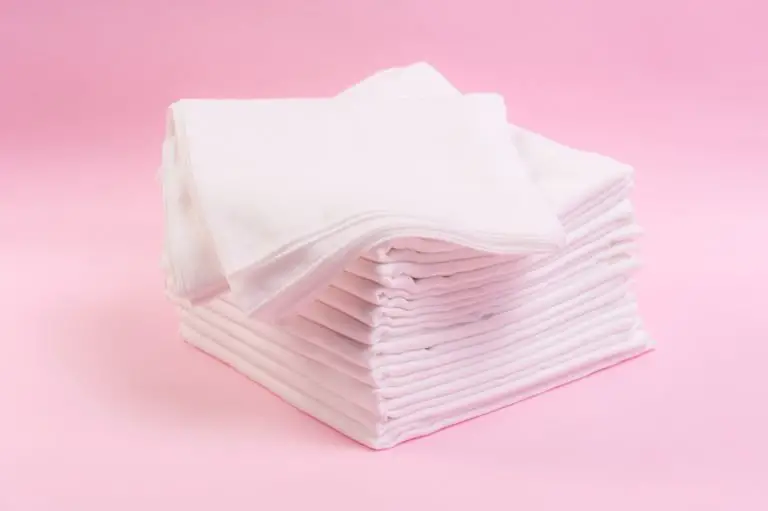
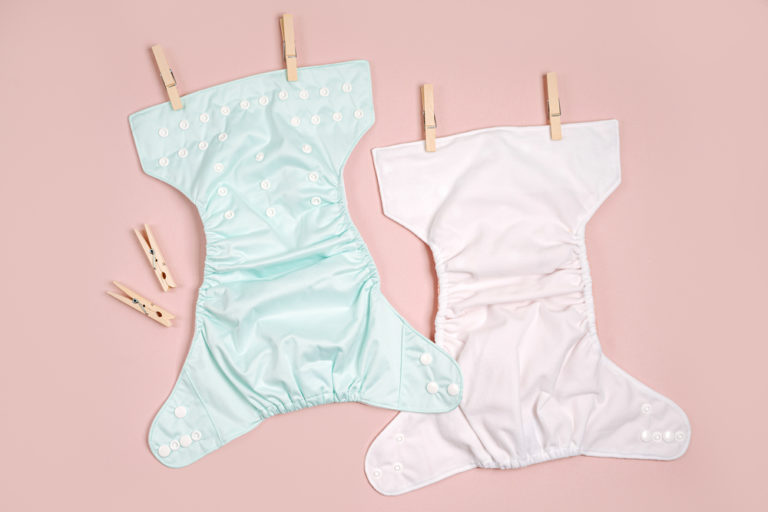
![12 Best Pull-Up Diapers for Potty Training [That Don’t Leak]](https://parentingmode.com/wp-content/uploads/2022/06/Depositphotos_146650641_S-768x513.jpg)
